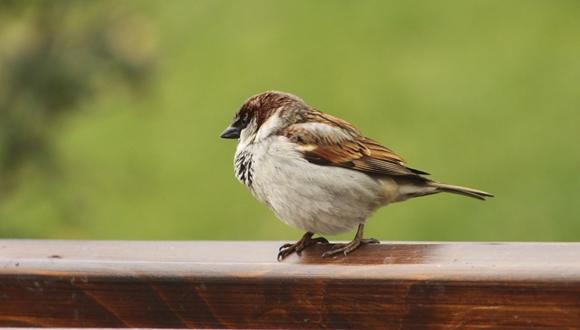'Back Yard Bird Count with Public Participation' Project, as an Educational and Monitoring Tool for Maintaining Biodiversity in the City
Student: Shlomit Lipschitz
Advisors: Prof. Yossi Leshem, Prof. Anat Barnea, Dr. Miri Rosenboim
Student: Shlomit Lipschitz
Advisors: Prof. Yossi Leshem, Prof. Anat Barnea, Dr. Miri Rosenboim
The 'Back- yard birds count with public participation' project includes student participation as well as wide public involvement. The current study suggests that the project can be used as a means of achieving the objectives of the national plan for biodiversity, both in the field of education and as a tool for monitoring and evaluating biodiversity in towns and villages.
Three questions were asked in the study. The first two questions are related to the possibility of monitoring the ecosystem in the city by amateur bird counts:
The first examined the reliability of the data from the 'Back- yard birds count with public participation' project, and the second dealt with the relationship between gardens’ components and birds species, in order to assess the possibility that birds can be indicators for biodiversity. The third question addressed the educational impact on fourth-graders participating in the 'Back- yard birds count' project - on knowledge, attitudes, emotional and behavior about birds and nature.
The question of data reliability from the 'Back- yard birds count with public participation' project was studied in two ways: the first - compared bird-identifying data between high ranked counters and low ranked counters from the data of Back-yard bird counts of the years 2011-2013. The second - compared between amateur and expert counts from 48 initiated bird count situations, in which the expert and the amateur counted birds in the same place and time. The study found that the data from the 'Back- yard bird count with public participation' project gives good information on 80 percent of the 15 birds in the survey. Three birds were identified to a lesser extent by the amateurs: the Great Tit, Spectacled Bulbul, and Palestine Sunbird.
The question of the relationship between components of gardens and bird species was also addressed in two ways: the first – was analysis of 82 gardens from the data of the 2013 count, which were reported by high expertise counters, and selected from data collected at the central region of Israel. 41 gardens had a high number of bird species identified (13 species and more) and 41 had low number identified bird species (1-6 species). I compared the components in both types of gardens from data that was marked in the counting forms. The second way in which I analyzed the relationship between elements of the garden and bird species was that I myself visited 30 gardens, 15 of which were gardens with a large number of identified bird species (13 and more) and 15 with a lower number of identified bird species (1-6). The characteristics which I referred to were bush covering, plant varieties and other characteristics such as dogs, cats, people, irrigation etc. The gardens that had many species of birds had higher cover of bushes, more species of bushes and trees, more coverage of grass and flower gardens compare to gardens with low numbers of bird species.
Most of the bird species in the gardens that had high number of bird species belonged to the 'City adapters' group, and most of the birds in the gardens with low number of bird species belonged to 'City exploiters' group. The study results strengthen the hypothesis that the number of bird species and the extent that they belong to the Exploiters or the Adapters can be an indicator for biodiversity.
The educational impact of participation in the 'Back yard bird count with public participation' project was researched by using questionnaires given to fourth-graders before and after a 90-minute tutorial. The questionnaires tested the knowledge enhancement, emotional, behavioral, and attitudes related to birds, wildlife and nature. 316 students from 12 classes in 3 schools (4 classes each school) participated in the study. Half of all school classes participated in the 'Back yard bird count with public participation' project within the study, and half of the classes did not participate in the project. All classes which participated in the study had an improvement of 21% in their answers, consisted of 9% improvement in knowledge and 12% improvement in attitudes that support saving birds and nature. Students who participated in the project had an additional improvement of 15%. This improvement was made up of 6% further improvement in knowledge and 9% improvement in emotional and sympathetic of birds and nature. In conclusion - participation in the Back yard bird count project improved the environmental literacy of students and is suitable as an educational means for preserving biodiversity.
In summary: this study demonstrates that the 'Back yard bird count with public participation' project, can be used as a means of maintaining biological diversity, both as a monitoring and as an interface tool and for education to maintaining biodiversity.




